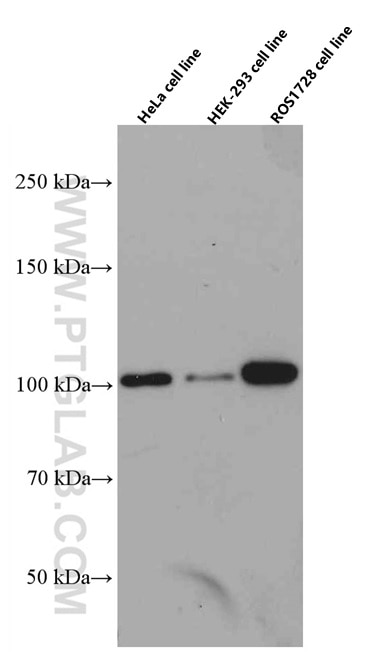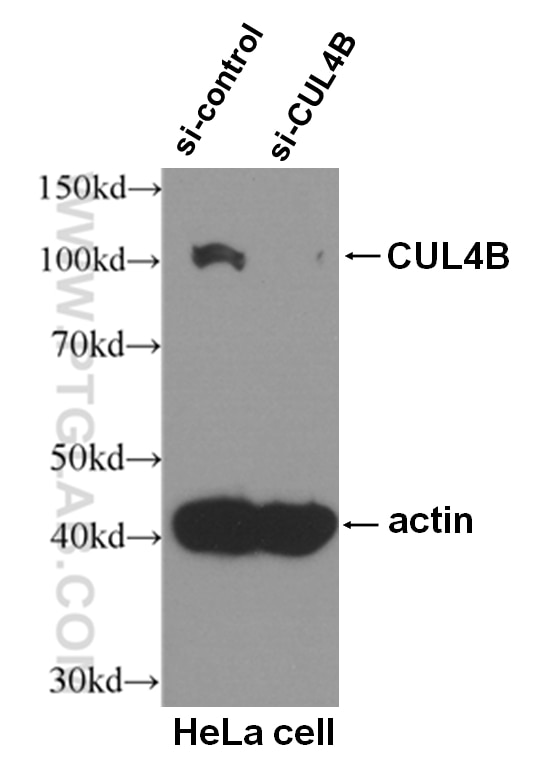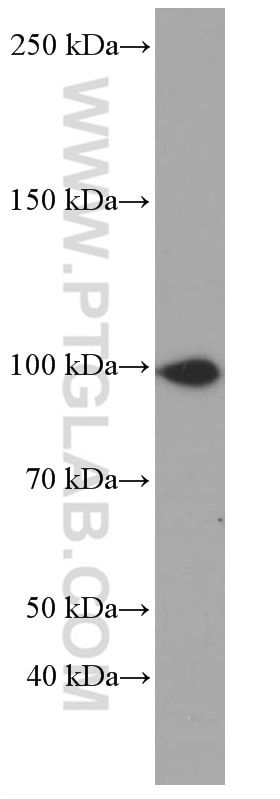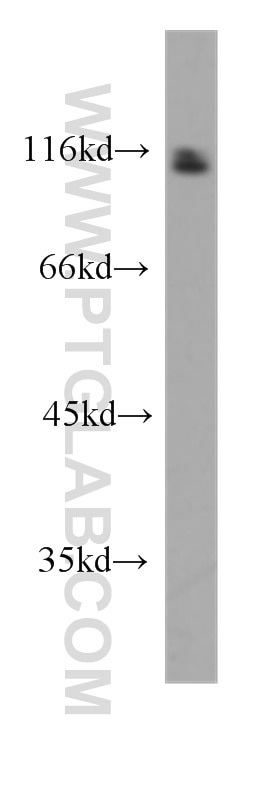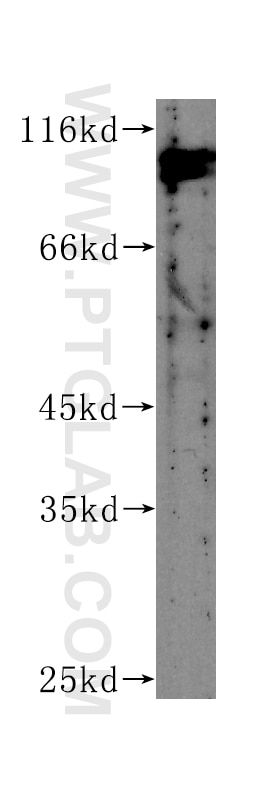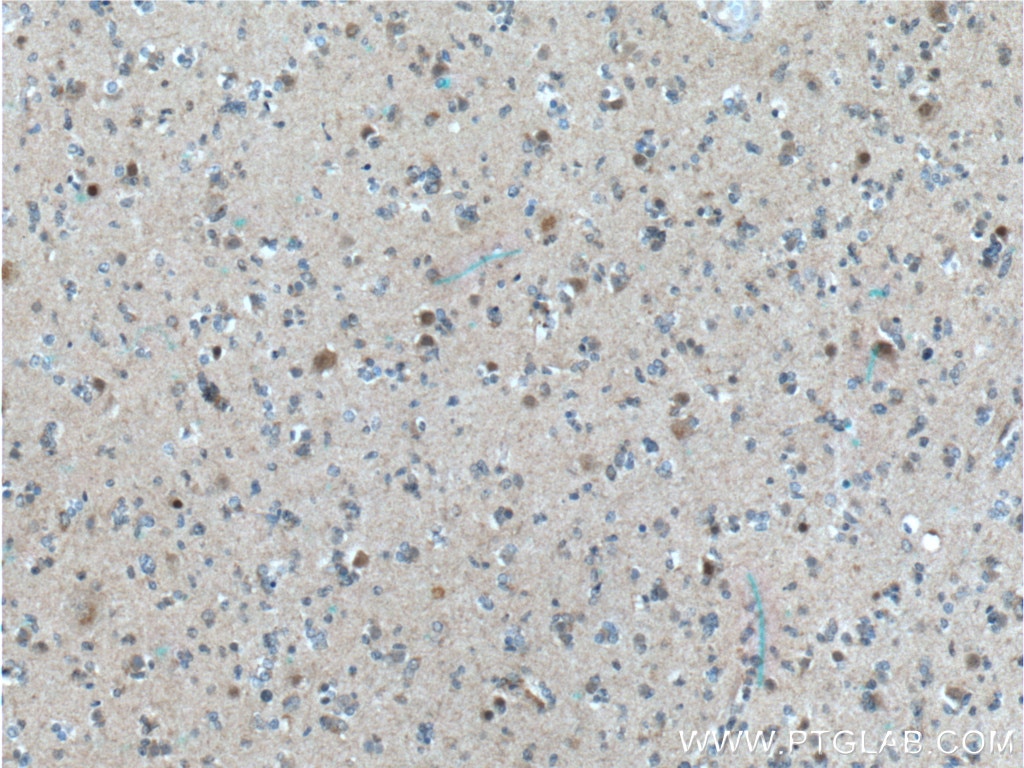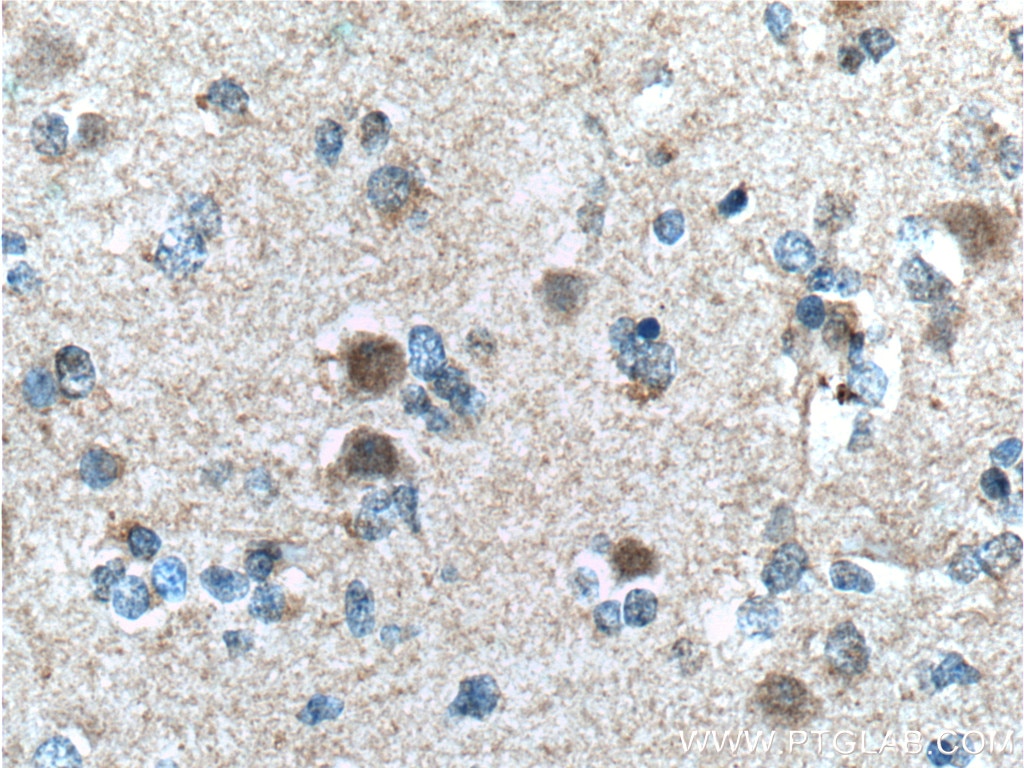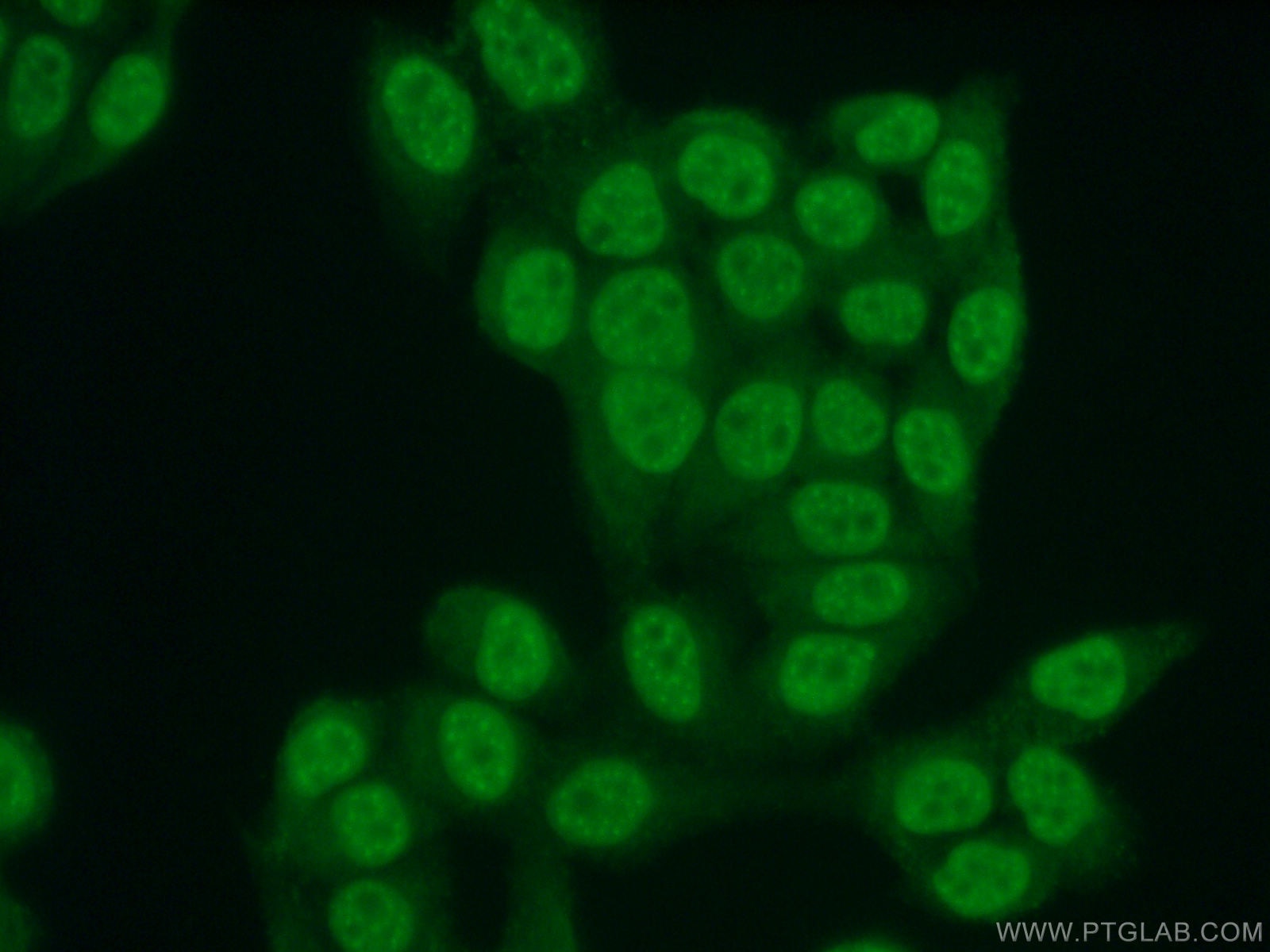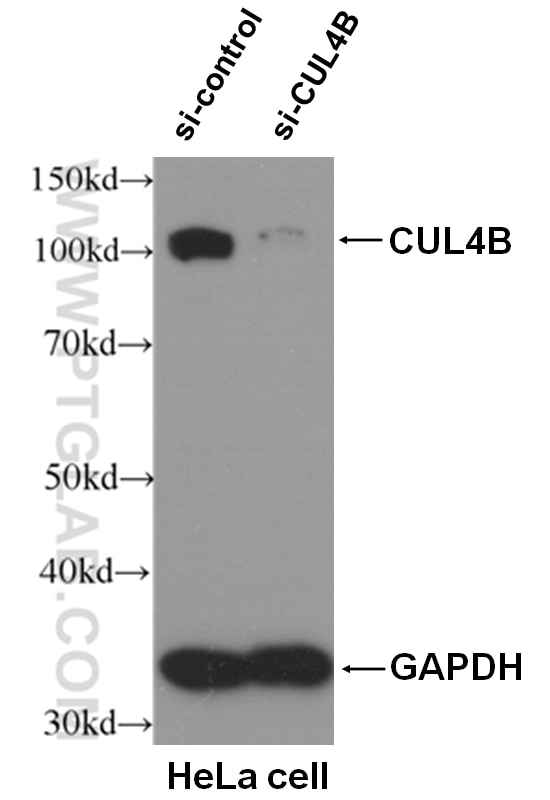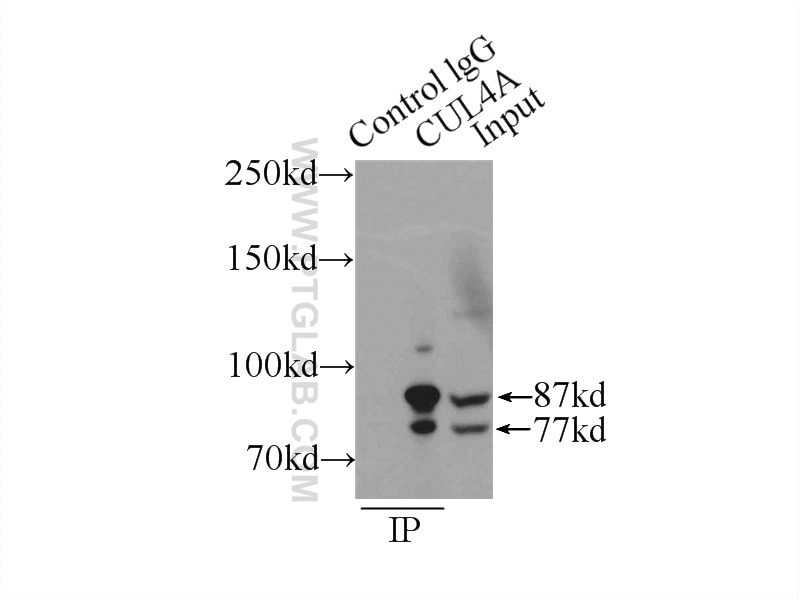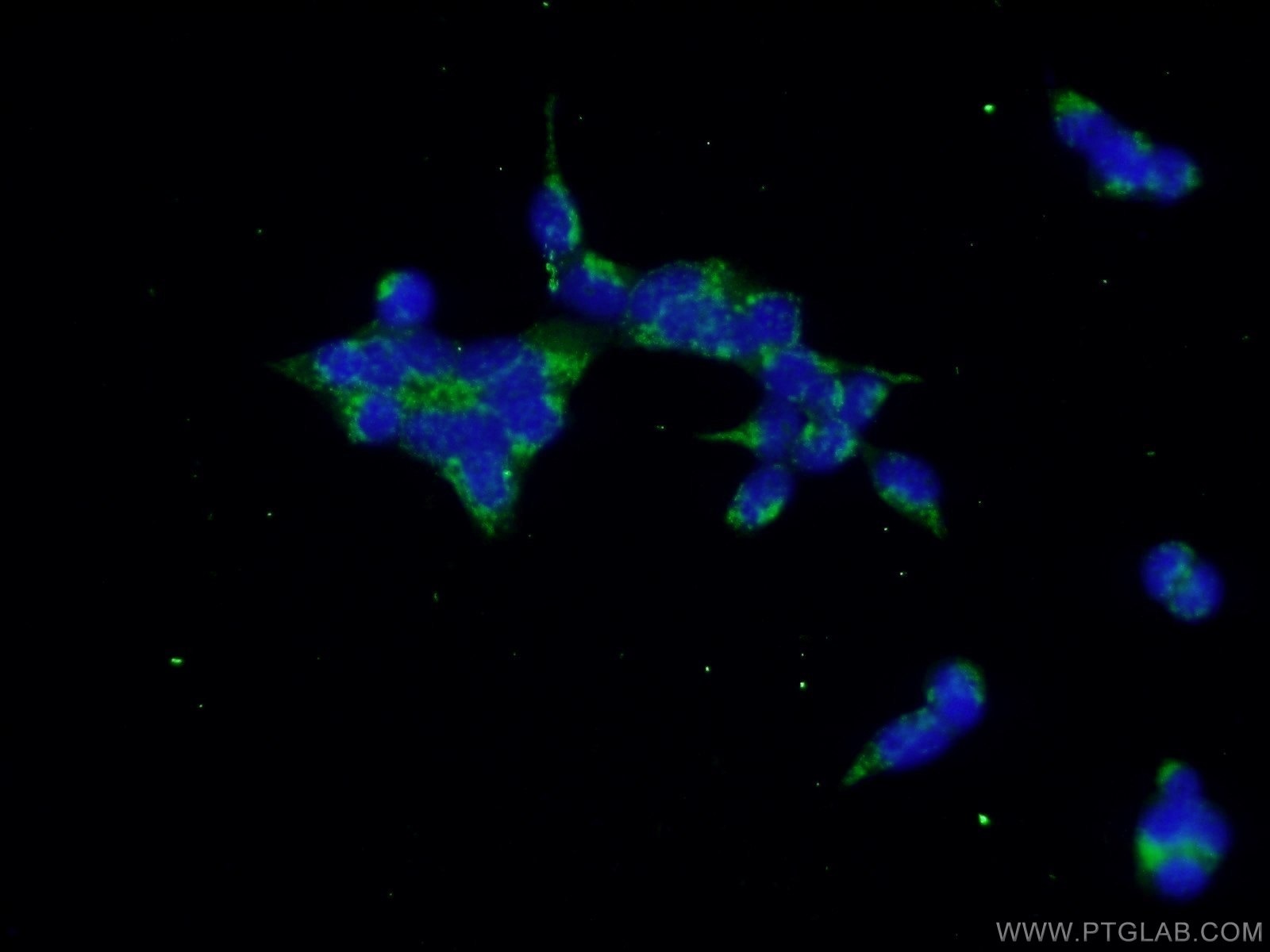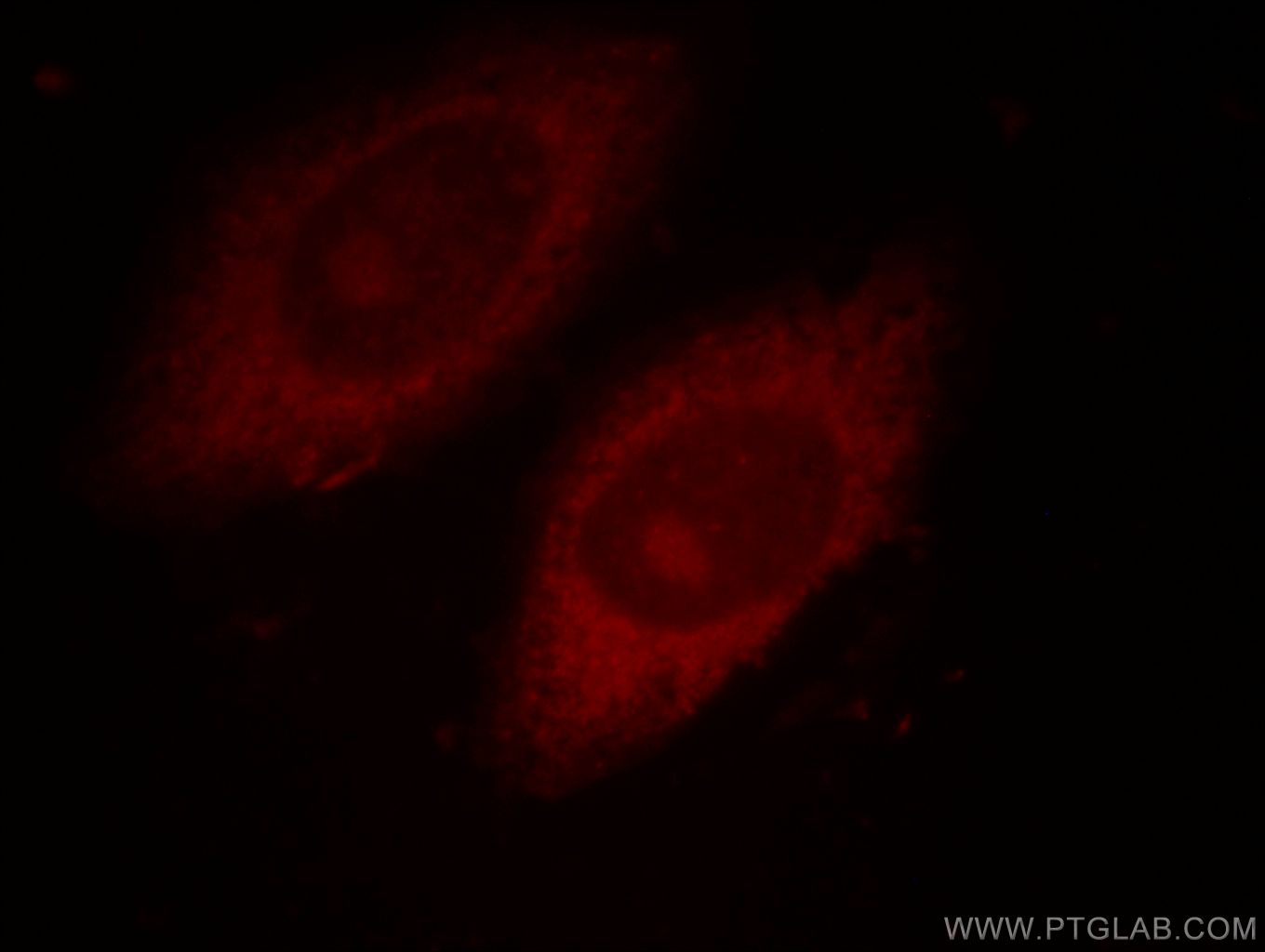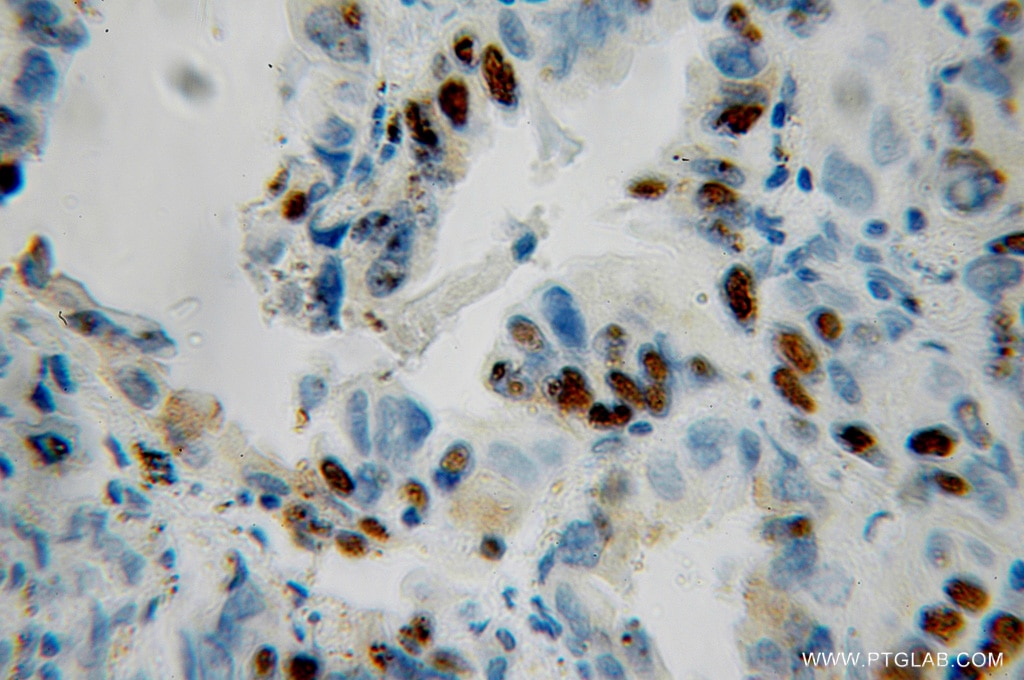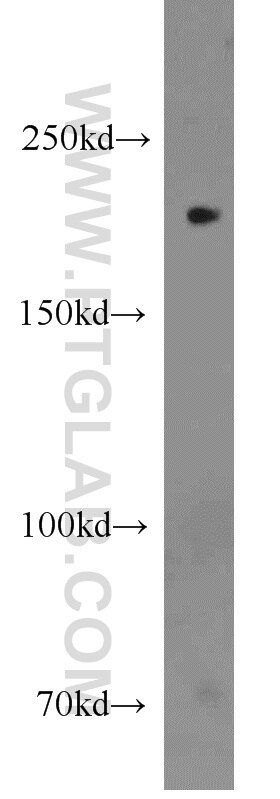- Phare
- Validé par KD/KO
Anticorps Monoclonal anti-CUL4B
CUL4B Monoclonal Antibody for IHC, WB,ELISA
Hôte / Isotype
Mouse / IgG1
Réactivité testée
Humain, rat et plus (1)
Applications
WB, IHC, ELISA
Conjugaison
Non conjugué
CloneNo.
4E10B10
N° de cat : 60151-1-Ig
Synonymes
Galerie de données de validation
Applications testées
| Résultats positifs en WB | cellules HeLa, cellules HEK-293, cellules ROS1728 |
| Résultats positifs en IHC | tissu de gliome humain il est suggéré de démasquer l'antigène avec un tampon de TE buffer pH 9.0; (*) À défaut, 'le démasquage de l'antigène peut être 'effectué avec un tampon citrate pH 6,0. |
Dilution recommandée
| Application | Dilution |
|---|---|
| Western Blot (WB) | WB : 1:1000-1:4000 |
| Immunohistochimie (IHC) | IHC : 1:50-1:500 |
| It is recommended that this reagent should be titrated in each testing system to obtain optimal results. | |
| Sample-dependent, check data in validation data gallery | |
Applications publiées
| KD/KO | See 1 publications below |
| WB | See 3 publications below |
| IHC | See 1 publications below |
Informations sur le produit
60151-1-Ig cible CUL4B dans les applications de WB, IHC, ELISA et montre une réactivité avec des échantillons Humain, rat
| Réactivité | Humain, rat |
| Réactivité citée | Humain, souris |
| Hôte / Isotype | Mouse / IgG1 |
| Clonalité | Monoclonal |
| Type | Anticorps |
| Immunogène | CUL4B Protéine recombinante Ag3563 |
| Nom complet | cullin 4B |
| Masse moléculaire calculée | 913 aa, 104 kDa |
| Poids moléculaire observé | 102 kDa |
| Numéro d’acquisition GenBank | BC036216 |
| Symbole du gène | CUL4B |
| Identification du gène (NCBI) | 8450 |
| Conjugaison | Non conjugué |
| Forme | Liquide |
| Méthode de purification | Précipitation de l'acide caprylique/du sulfate d'ammonium |
| Tampon de stockage | PBS avec azoture de sodium à 0,02 % et glycérol à 50 % pH 7,3 |
| Conditions de stockage | Stocker à -20°C. Stable pendant un an après l'expédition. L'aliquotage n'est pas nécessaire pour le stockage à -20oC Les 20ul contiennent 0,1% de BSA. |
Informations générales
Cullin-RING ligases (CRLs) complexes participate in the regulation of diverse cellular processes, including cell cycle progression, transcription, signal transduction and development (PMID: 21816341)(PMID: 21554755). Serving as the scaffold protein, cullins are crucial for the assembly of ligase complexes, which recognize and target various substrates for proteosomal degradation. Two cullin 4 (CUL4) proteins, CUL4A (87 kDa) and CUL4B(104 kDa), are two members in cullin family with 83% of identity. Mutations in human CUL4B are one of the major causes of X-linked mental retardation. Cul4b knockout mice demonstrated that CUL4B is indispensable for embryonic development in the mouse (PMID: 22606329).
Protocole
| Product Specific Protocols | |
|---|---|
| WB protocol for CUL4B antibody 60151-1-Ig | Download protocol |
| IHC protocol for CUL4B antibody 60151-1-Ig | Download protocol |
| Standard Protocols | |
|---|---|
| Click here to view our Standard Protocols |
Publications
| Species | Application | Title |
|---|---|---|
Curr Biol Temporal Regulation of ESCO2 Degradation by the MCM Complex, the CUL4-DDB1-VPRBP Complex, and the Anaphase-Promoting Complex. | ||
Int J Oncol miR‑381 and miR‑489 suppress cell proliferation and invasion by targeting CUL4B via the Wnt/β‑catenin pathway in gastric cancer. | ||
Biochem Biophys Res Commun Insulin alleviates LPS-induced ARDS via inhibiting CUL4B-mediated proteasomal degradation and restoring expression level of Na,K-ATPase α1 subunit through elevating HCF-1. | ||
Pathol Res Pract Cullin-4B promotes cell proliferation and invasion through inactivation of p53 signaling pathway in colorectal cancer. | ||
Sci Adv NEDDylated Cullin 3 mediates the adaptive response to topoisomerase 1 inhibitors
|
